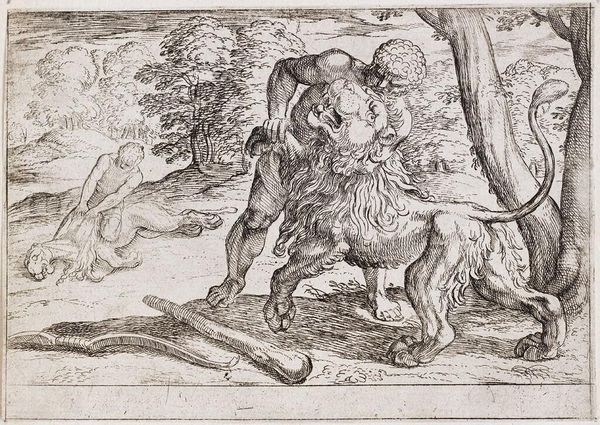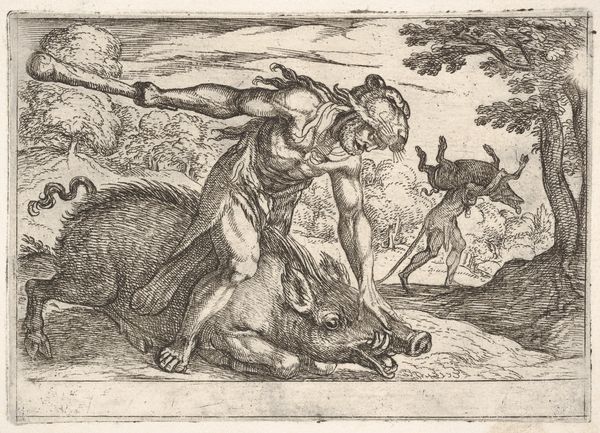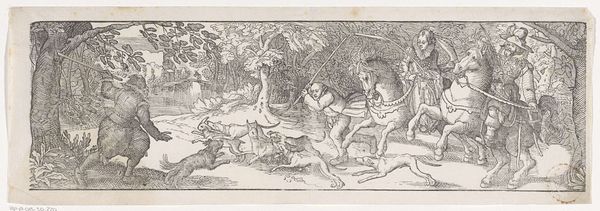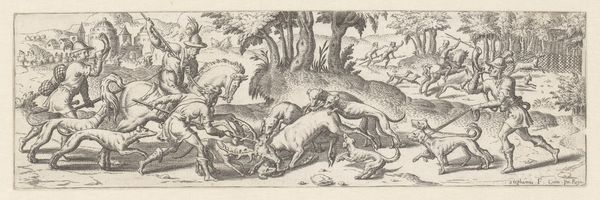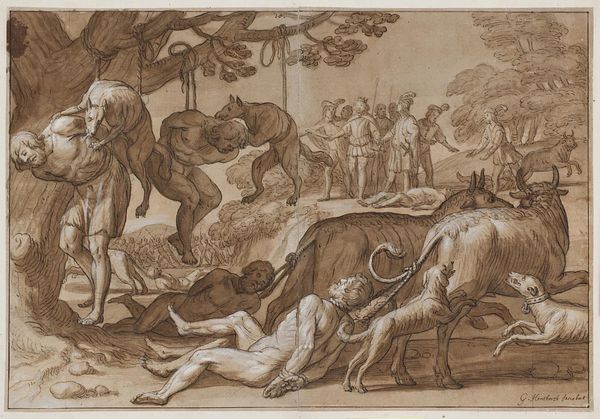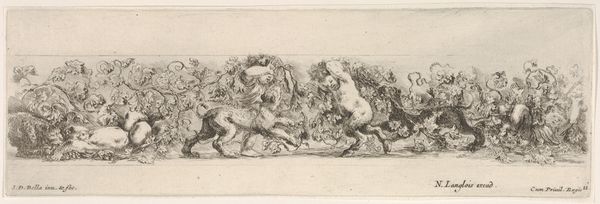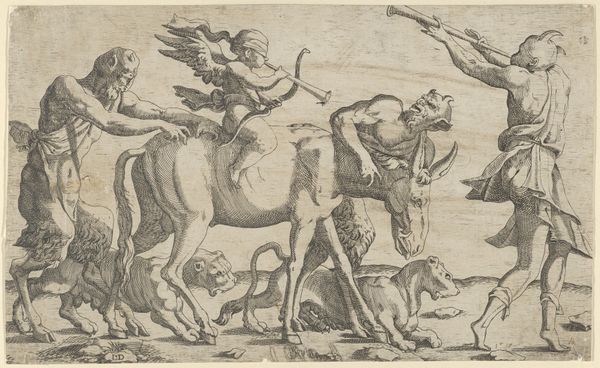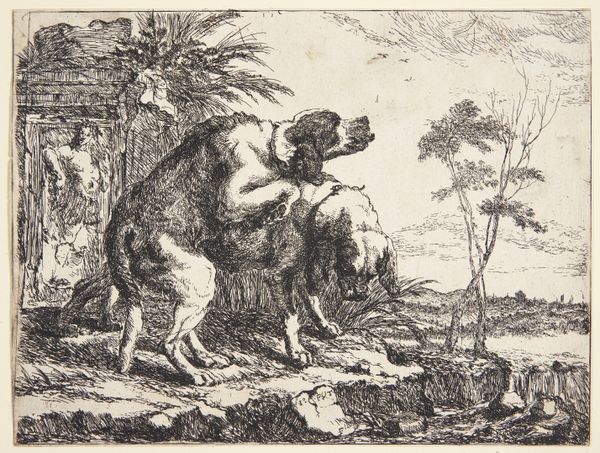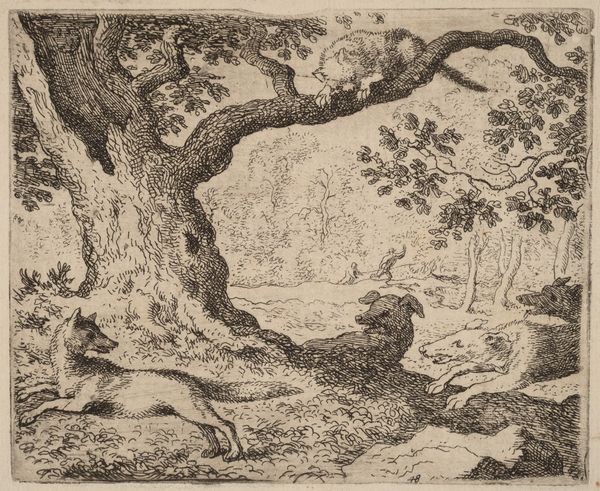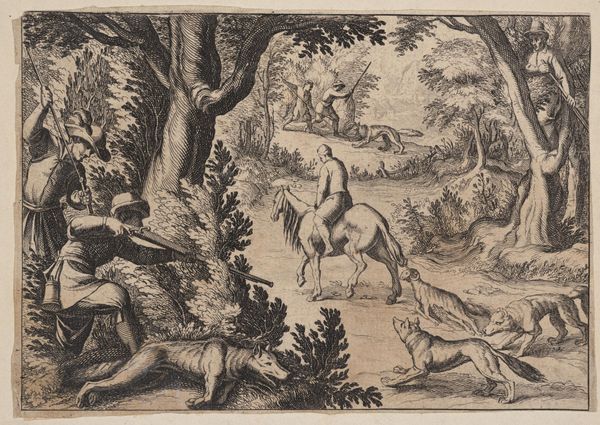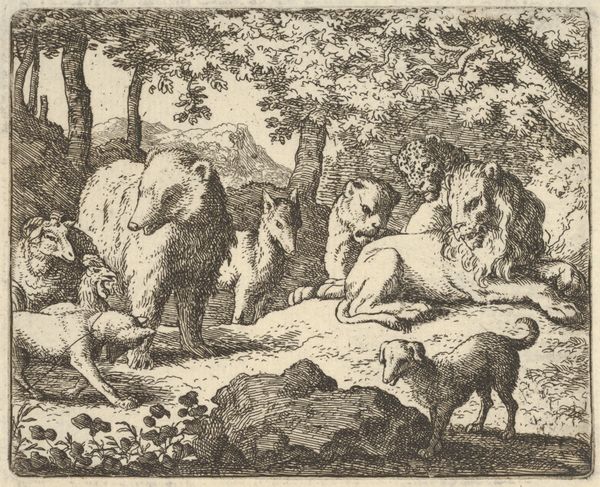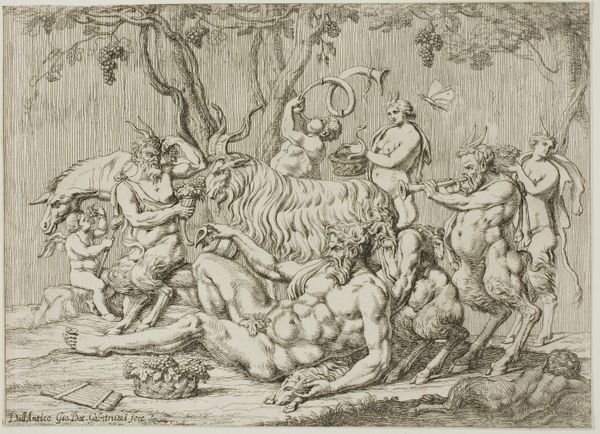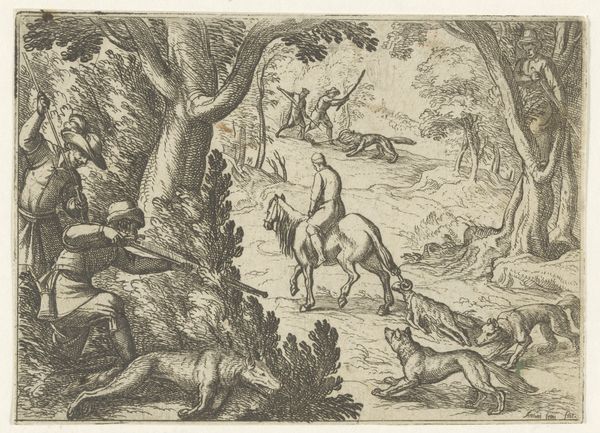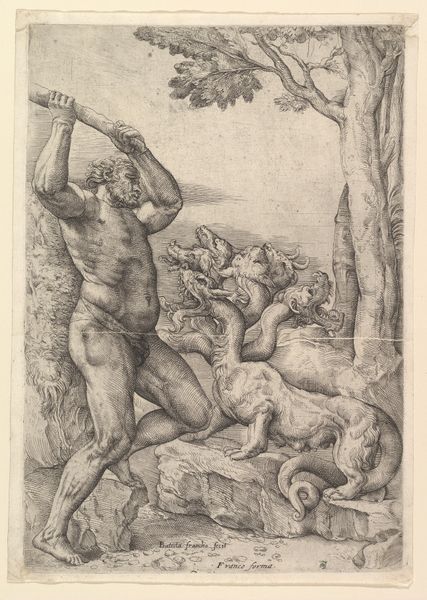
Hercules and the Nemean Lion: Hercules grasps the front right leg of the lion, which lifts its snout upward, in the middle ground Hercules pulls the skin from the lion's corpse, from the series 'The Labors of Hercules' 1608
0:00
0:00
drawing, print, engraving
#
drawing
#
pen drawing
# print
#
mannerism
#
figuration
#
history-painting
#
engraving
Dimensions: sheet: 5 3/16 x 7 1/16 in. (13.2 x 18 cm) plate: 3 15/16 x 5 9/16 in. (10 x 14.2 cm)
Copyright: Public Domain
Curator: Look closely at Antonio Tempesta's 1608 engraving, currently held at the Metropolitan Museum of Art. It depicts Hercules grappling with the Nemean lion, specifically his act of skinning the beast. The print comes from his series 'The Labors of Hercules'. Editor: Whoa, intense! Even in this delicate etching, the energy jumps out. It's violent, but there's a strange sort of grace too. Is it just me, or is there something slightly comic about the lion’s outstretched paws? Like a cat refusing a bath. Curator: That's a valid read. Remember Mannerism valued artifice, so even depictions of brute strength contained elements of stylization and theatricality. Tempesta’s Hercules is not just a muscle-bound hero, he's also performing heroism. It feeds into a larger Renaissance and Baroque interest in the idea of virtue being proven through deeds. Editor: Performing heroism... Yeah, that nails it. Look how cleanly delineated everything is, like he's not just wrestling a lion, he's starring in a scene. You’ve got the lion getting skinned, Hercules standing strong, and what remains of the broken wooden club that couldn’t hurt this cat, or, lion. But honestly, it looks like drawing skin from an onion more than ripping it off a powerful lion. Curator: Interesting take! It’s important to recall how artists of the time relied on visual sources to produce imagery of the exotic world. Actual encounters with a lion like the Nemean lion was virtually impossible. We need to also consider how powerful and symbolic animal bodies like this one are mobilized in a period obsessed with dynastic power. Editor: Animal bodies symbolizing power... Yeah, right to the royal core! What's striking to me is how Tempesta makes this legendary feat tangible. I mean, it is only a simple drawing of an already mythical figure in history, but to imagine taking on something primal is empowering. And what of poor Hercules. Imagine trying to remove that hide—lion fur is the absolute worst, especially soaked in blood. Curator: Considering our conversation and analysis of the piece, Hercules embodies the transition of man imposing over untamed wilderness. I wonder how his original viewers saw him. I guess now we can keep researching about that time and consider what others think about this artwork, too. Editor: The raw energy frozen into delicate lines--pretty powerful way to think of an artistic mark that is full of strength, indeed.
Comments
No comments
Be the first to comment and join the conversation on the ultimate creative platform.
